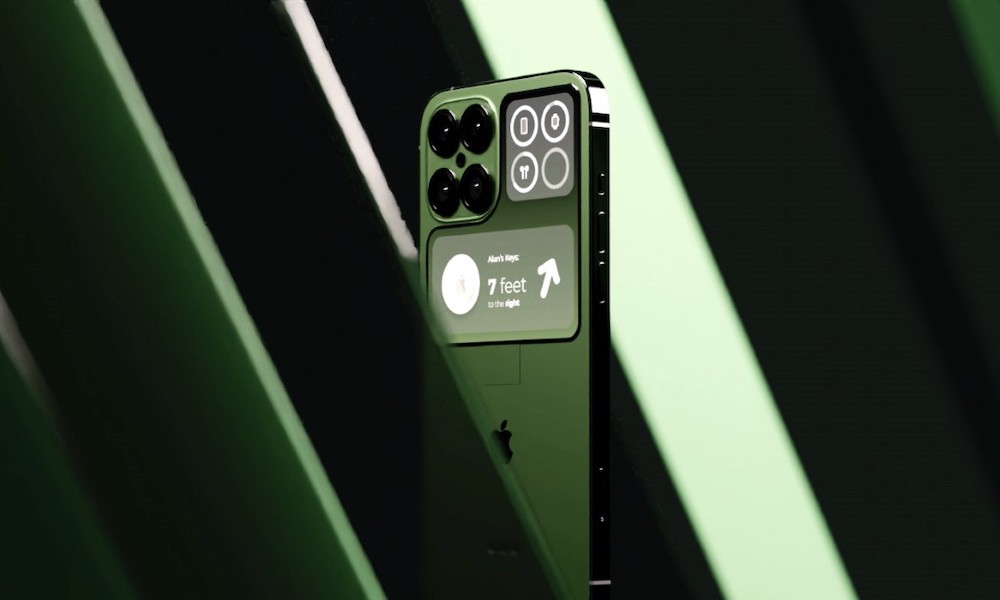Buttery Smooth 120Hz ProMotion Displays May Come to the Entire ‘iPhone 14’ Lineup
 Credit: ConceptsiPhone / Max Burgos Morjaen
Credit: ConceptsiPhone / Max Burgos Morjaen
Toggle Dark Mode
It’s pretty much a given that Apple plans to offer some significant display improvements to the “iPhone 13 Pro” lineup this year, but if reports are true, fans of the standard iPhone models may be able to join the club as soon as next year.
While Apple has offered 120Hz “ProMotion” displays in its higher-end iPad models since the very first 12.9-inch iPad Pro debuted back in 2015, it wasn’t until a couple of years ago that we began to hear solid reports that Apple was working to bring this display technology to the iPhone as well.
To be clear, even though the iPad Pro has had a 120Hz display for years, these have been built on traditional LCD technology. With Apple’s flagship iPhone models making the switch to OLED in 2017, adding faster displays became more complicated, requiring newer LTPO technology that was initially much costlier to produce.
In fact, there’s every indication that Apple actually planned to add 120Hz displays to the iPhone 12 Pro and iPhone 12 Pro Max, but called it off at the last minute due to pandemic-related component shortages. It’s even likely Apple’s Leather Sleeve with MagSafe, which shows the clock through a window in the case, was designed with the assumption that an always-on LTPO display would be coming to the iPhone 12 Pro models.
Of course, component shortages don’t last forever, and it’s a pretty safe assumption that the feature wasn’t being cancelled so much as pushed off into the 2021 lineup, and supply chain analysts began predicting this even before Apple unveiled the iPhone 12 last October.
Although some rumours raised concerns that Apple might limit the better display to the 6.7-inch “iPhone 13 Pro Max” — in much the same way that Mini-LED only came to the 12.9-inch iPad Pro this year — those were quickly put to rest also, with reliable industry analysts confirming that both the “Pro” iPhone models will get the newer and faster display technology.
120Hz Displays for All
On the other hand, while the standard “iPhone 13” and “iPhone 13 mini” are expected to feature the same 60Hz OLED displays as their iPhone 12 counterparts, The Elec predicts this will change in 2022, with Apple lining up even more suppliers for the higher-end displays to ensure that it can meet demand.
Specifically, The Elec notes that LG, which up to this point has only been producing the 60Hz LTPS displays, is preparing to convert its production lines to handle the newer 120Hz LTPO displays. This will allow it to join Samsung in providing the higher-end displays for Apple’s newest iPhone models.
Although the report doesn’t specifically say anything about Apple’s plans, it’s unlikely that Apple expects sales of its Pro models to increase so much next year that it would need to double its supply chain capacity for the faster and lower-power LTPO displays.
Further, while Apple is expected to give the 5.4-inch iPhone one more year — meaning we will see an “iPhone 13 mini” this fall — reputable analyst Ming-Chi Kuo has predicted that the 2022 iPhone lineup will replace that with a 6.7-inch “iPhone 14 Max”. This would add another incentive for Apple to standardize its displays across the entire iPhone lineup.
After all, interchangeable parts are more economical and efficient for Apple’s supply chain. For example, Apple already uses identical displays in the iPhone 12 and iPhone 12 Pro, meaning that it only needs to order one type of display for both those models.
On the other hand, this could eliminate what has traditionally been a key differentiator between Apple’s standard and Pro iPhone models. The iPhone 11 and iPhone XR both featured Apple’s Liquid Retina LCDs, setting the OLED-equipped “Pro” models apart from their more affordable siblings.
While the current iPhone 12 lineup shares the same OLED displays across the board, that’s the first time this has happened — and arguably only because Apple couldn’t pull off the faster 120Hz displays in the “Pro” models. It looks like that distinction will return this fall, so it seems like it’s going to continue to be Apple’s normal strategy — unless of course the company has another trick up its sleeve to set its Pro models apart, such as going with a punch-hole camera design or even eliminating the notch entirely.
[The information provided in this article has NOT been confirmed by Apple and may be speculation. Provided details may not be factual. Take all rumors, tech or otherwise, with a grain of salt.]






